Page Not Found
Page not found. Your pixels are in another canvas.
A list of all the posts and pages found on the site. For you robots out there is an XML version available for digesting as well.
Page not found. Your pixels are in another canvas.
This is a page not in th emain menu
Published:
Už jste slyšeli, že Grantová agentura ČR (GAČR) nebude od roku 2024 udělovat podpory Junior Star mladým vědcům, kteří jsou tak excelentní, že dosáhli na podporu od vlastních hostitelských institucí? Takže kdo dostane Primus od Univerzity Karlovy, má přinejmenším na tři roky smůlu. Žádejte o Starting grant od Evropské rady pro výzkum (ERC), pokud můžete, nebo se radši přesuňte do zahraničí. Protože tahle země není pro mladé navrátilce nebo (nedej bože) cizince. Čtěte dál, abyste zjistili, jak jsem k tomuto názoru došel.
Published:
Dear Candidate,
Published:
In summer 2020, I got a message from Charles University in Prague that I have won an institutional support for conducting my research in the field of ultra-cold plasma physics at the Department of Surface and Plasma Physics. The 3 months that followed this news were cruel as I had to decide whether I take the offer or stay in a well-paid job of an optical engineer in the automotive industry.
Published:
The past three years in Oxford have been very busy for me. I received an award from the Department of Chemistry for managing a research project independently when my superior was on leave. I won Oxford University’s poster prize and was selected to present my research in the British Parliament. I co-authored two publications and two more are on the horizon. I am building a huge apparatus that is 95% based on my ideas. So, I have completely forgotten about the skeleton in my cupboard: three unproductive years at the University of Freiburg.
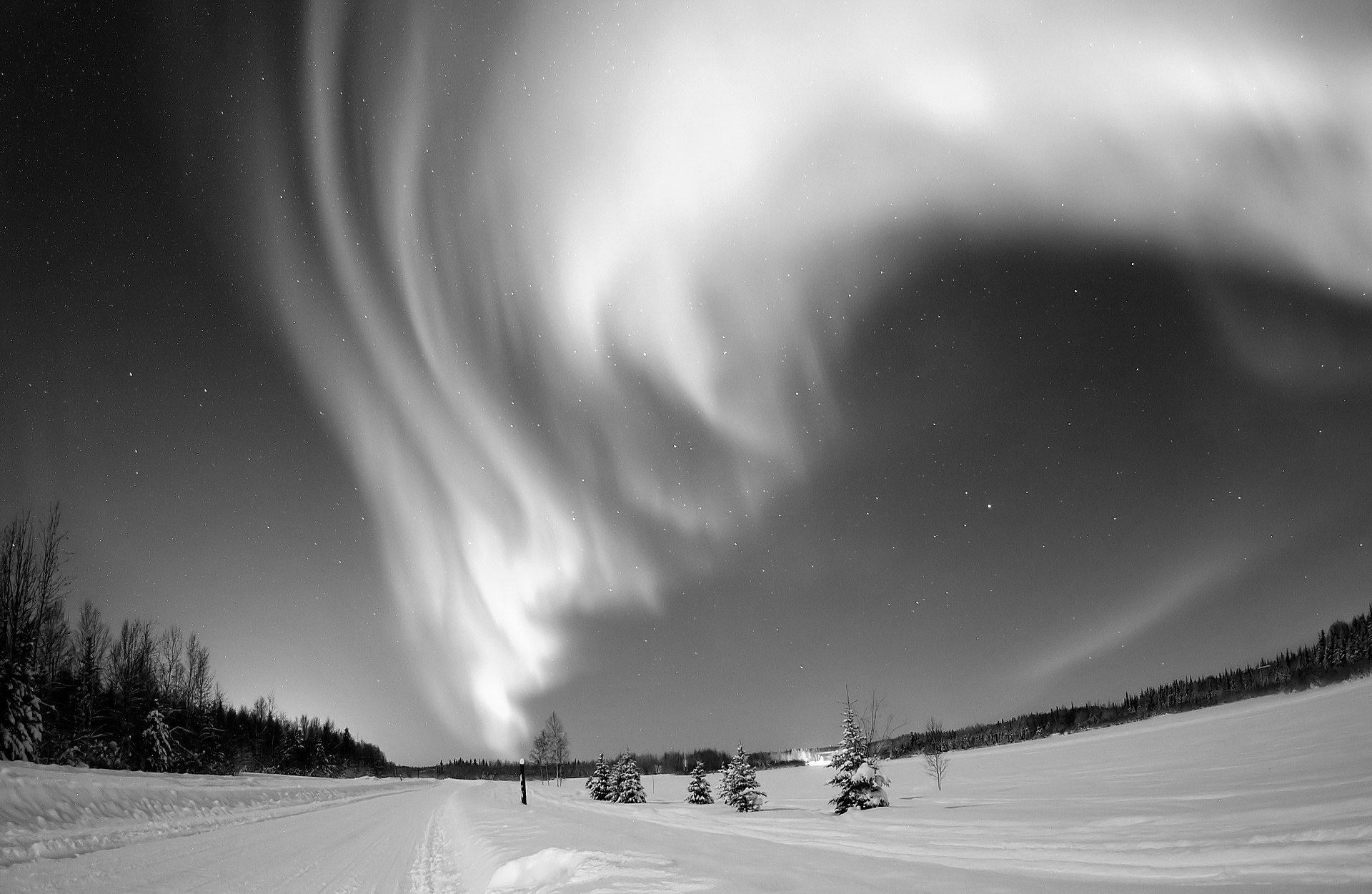
PhD Student
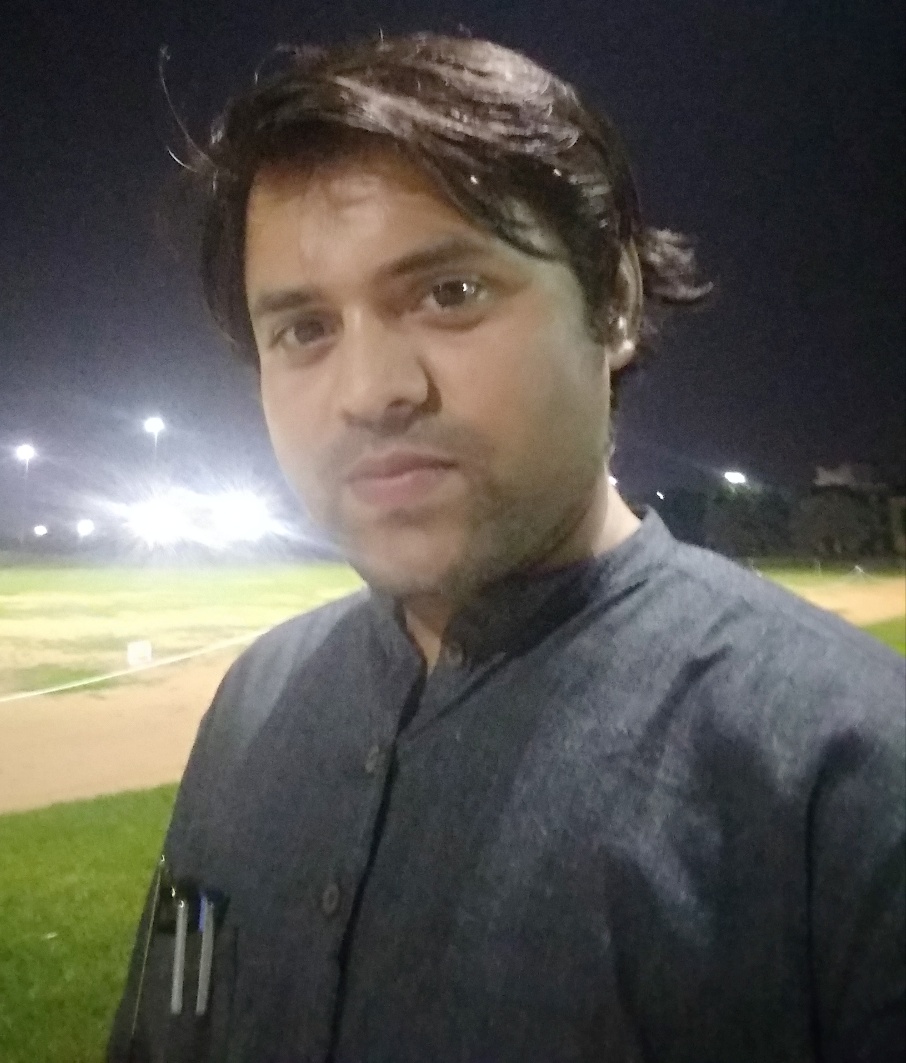
PhD Student
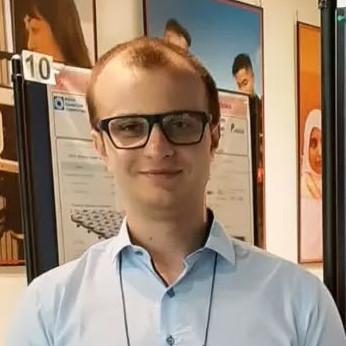
Doctoral Student
Undergraduate Student
Undergraduate Student
European Physical Society Conference on Plasma Physics, Prague 2018 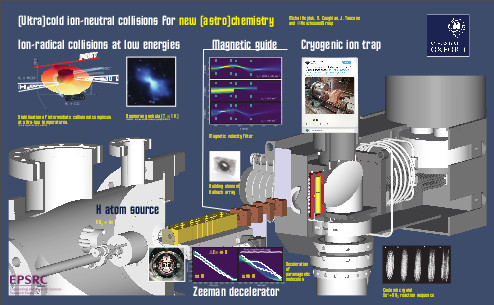
A story about how I became a scientist on a website of the Department of Chemistry (University of Oxford) 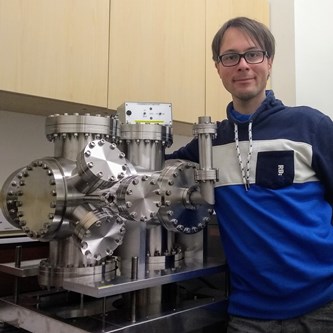
OxTALENT 2018 Winner in "Research poster - innovative design" category. 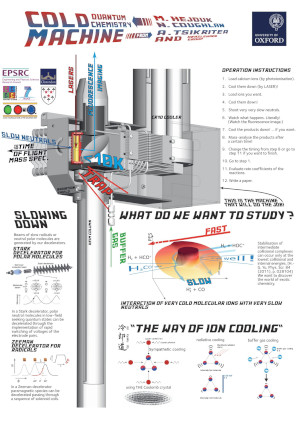
Published in The Astrophysical Journal, 2013
Using a cryogenic 22-pole trap, we studied a reaction of nuclear spin isomers of molecular hydrogen with atomic nitrogen ions. We observed something that could be interpreted as a dependence of the reaction rate coefficient on fine structure states of the ion. In order to prove a plausibility of this hypothesis, I constructed a computer model of chemical kinetics and compared the results with the experimental data. This has allowed us to extract state-specific rate coefficients for the reaction. It appears that each of the nitrogen ion’s fine structure states has a significantly different reactivity. This can influence interpretations of some of the emission spectra from interstellar clouds.
Recommended citation: Illia Zymak, Michal Hejduk, Dmytro Mulin, Radek Plašil, Juraj Glosík, Dieter Gerlich, "Low-Temperature Ion Trap Studies of N+ (3Pja) + H2 (j) → NH+ + H". Astrophys. J. 768.1, 86 (2013), p. 86. https://doi.org/10.1088/0004-637X/768/1/86
Published in The Journal of Chemical Physics, 2015
In this paper we describe measurements of electron-ion recombination coefficients for nuclear spin isomers of trihydrogen cations at temperatures down to 60 K. We confirmed that para nuclear spin isomers recombine with a significantly higher rate coefficient than ortho isomers. I developed a method how to modify a population of nuclear spin states of the ions in the existing flowing fterglow apparatus and interpreted the measured data.
Recommended citation: Michal Hejduk, Petr Dohnal, Peter Rubovič, Ábel Kálosi, Radek Plašil, Rainer Johnsen, and Juraj Glosík, "Flowing-afterglow study of electron-ion recombination of para–H3+ and ortho–H3+ ions at temperatures from 60 K to 300 K" J. Chem. Phys. 143(4), 044303 (2015) https://aip.scitation.org/doi/10.1063/1.4927094
Published in Review of Scientific Instruments, 2019
In this paper we demonstrate how to pick a narrow band of velocities from a beam of hydrogen atoms. This is important for performing studies on a chemical reactivity between the atoms and ions trapped in a cryogenic ion trap - another device that is being developed by me. We performed extensive molecular dynamics simulations in order to determine a proper design and carried out confirmatory experiments. As a result, we have shown that 52% of particles with v within ± 10 m/s of the target velocity are transmitted for v = 200 m/s, for example. I have built a mathematical model that helped us to interpret results of computer simulations. Without that, we would have struggled to explain some of the observed phenomena.
Recommended citation: Jutta Toscano, Michal Hejduk, Henry G. McGhee, and Brianna R. Heazlewood, "Manipulating hydrogen atoms using permanent magnets: Characterisation of a velocity-filtering guide". Rev. Sci. Instrum. 90.3 (2019), p. 033201. https://aip.scitation.org/doi/10.1063/1.5078573
Published in The Journal of Physical Chemistry A, 2019
We have demonstrated that neutral radicals can be decelerated using relatively short Zeeman decelerators if the switching sequence for electromagnets is optimised using an evolutionary algorithm. It means that investments in long decelerators are not necessary in many cases. Now, several laboratories are considering adapting the same optimisation method to their own experiments. I supervised computer simulations performed by a master degree student and a PhD student.
Recommended citation: Jutta Toscano, Lok Yiu Wu, Michal Hejduk, and Brianna R. Heazlewood, "Evolutionary algorithm optimisation of Zeeman deceleration: Is it worthwhile for longer decelerators?". J. Phys. Chem. A 123 (2019), pp. 5388-5394. https://pubs.acs.org/doi/abs/10.1021/acs.jpca.9b00655
Published in Review of Scientific Instuments, 2019
A new optical system is introduced for the imaging of Coulomb crystals held in a cryogenic ion trap where there are space limitations preventing the placement of an objective close to the fluorescing ions. The optical system features an off-axis parabolic (OAP) mirror relay microscope that will serve to acquire images of a lattice of fluorescing ions confined within an ultra-high-vacuum vessel operating at temperatures below 10 K. We report that the OAP mirror relay setup can resolve features smaller than the separation between neighboring ions in Coulomb crystals. The setup presented here consists of two 90-degree OAP mirrors arranged into a relay from which standard microscope optics deliver the image to a camera. This design allows the first element in the imaging setup—an OAP mirror—to be located as close as possible to the ion trap, achieving high resolution without the need for a direct line-of-sight to the trap center or for a view port to be located in close proximity to the ion trap. Such an arrangement would not be possible with a standard microscope objective, which is the approach commonly adopted by the field. OAP mirrors represent a novel solution for delivering polychromatic images with micrometer-scale resolution over extended distances.
Recommended citation: Michal Hejduk and Brianna R. Heazlewood, "Off-axis parabolic mirror relay microscope for experiments with ultra-cold matter". Rev. Sci. Instrum. 90 (2019), p. 123701. https://aip.scitation.org/doi/10.1063/1.5123792
Published in Review of Scientific Instruments, 2022
Ultra-high vacuum conditions are ideal for the study of trapped ions. They offer an almost perturbation-free environment, where ions confined in traps can be studied for extended periods of time—facilitating precision measurements and allowing infrequent events to be observed. However, if one wishes to study processes involving molecular ions, it is important to consider the effect of blackbody radiation (BBR). The vast majority of molecular ions interact with BBR. At 300 K, state selection in trapped molecular ions can be rapidly lost (in a matter of seconds). To address this issue, and to maintain state selectivity in trapped molecular ions, a cryogenic ion trap chamber has been constructed and characterized. At the center of the apparatus is a linear Paul ion trap, where Coulomb crystals can be formed for ion–neutral reaction studies. Optical access is provided, for lasers and for imaging of the crystals, alongside ion optics and a flight tube for recording time-of-flight mass spectra. The ion trap region, encased within two nested temperature stages, reaches temperatures below 9 K. To avoid vibrations from the cryocooler impeding laser cooling or imaging of the ions, vibration-damping elements are explicitly included. These components successfully inhibit the coupling of vibrations from the cold head to the ion trap—confirmed by accelerometer measurements and by the resolution of images recorded at the trap center (at 9 and 295 K). These results confirm that the cryogenic ion trap apparatus meets all requirements for studying ion–neutral reactions under cold, controlled conditions.
Recommended citation: Miossec, Chloé, Michal Hejduk, Rahul Pandey, Neville J. A. Coughlan, and Brianna R. Heazlewood. ‘Design and Characterization of a Cryogenic Linear Paul Ion Trap for Ion–Neutral Reaction Studies’. Review of Scientific Instruments 93, no. 3 (2022): 033201. https://aip.scitation.org/doi/10.1063/5.0080458
Published in Applied Surface Science, 2023
We report a simple and efficient two-step experimental procedure of glass metallization using laser microstructuring at ambient conditions. An adhesive pattern was created on the glass substrate using a laser, which imposes mechanical interlocking. An adhesive Cu layer was deposited on the glass substrate by magnetron sputtering and then electroplated with a functional Cu layer. Due to the unique surface structure created on the glass using laser, we achieved a thick layer of Cu metal film with high adhesion strength, well-defined grains and grain boundaries, and low surface roughness. The total thickness of the grown film was 11.4 µm, with an average surface roughness of 1.2 µm. The magnetron-sputtered coating did not show delamination from the glass substrate at a critical load of 60 N. The proposed method of glass metallization will lead to the realization of glass-based circuit materials that can be used in high-frequency electronic devices. Also, this procedure will be an alternative to chemical-based copper plating, which involves multiple processing steps and high-cost chemicals.
Recommended citation: Antony, Albin, Michal Hejduk, Tomáš Hrbek, Peter Kúš, Radka Bičišťová, Petr Hauschwitz, and Ladislav Cvrček. ‘Laser-Assisted Two-Step Glass Wafer Metallization: An Experimental Procedure to Improve Compatibility between Glass and Metallic Films’. Applied Surface Science, 17 April 2023, 157276. https://doi.org/10.1016/j.apsusc.2023.157276. https://www.sciencedirect.com/science/article/pii/S0169433223009546
Published in Industrial Property Office of the Czech Republic, 2024
The supply circuit system of a planar Paul trap, where on the substrate (1) there are at least two electrode segments (2) arranged in the closed planar shape and a ground electrode (11) located in the middle of the shape, whereas the electrode segments (2) are electrically interconnected. Further on the substrate (1) there are waveguides (3) arranged in such way that to the input waveguide (31) at least one symmetrizing element is connected directly or via the input branch (32), preferably Marchand balun (33), and at least two resonance branches are further connected to each symmetrizing element and each resonance branch is connected directly or via at least one connecting branch (36) to at least one electrode segment (2), and the ground electrode (11) is grounded. The electrode segments (2) and the ground electrode (11) are preferably located on one side of the substrate (1) and the waveguides (3) are located on the opposite side of the substrate (1).
Recommended citation: Hejduk, Michal, and Niklas Vilhelm Lausti. Systém napájecího obvodu planární Paulovy pasti / A supply circuit system of a planar Paul trap. Patent CZ310234B6, filed November 14, 2023, and issued December 18, 2024. https://worldwide.espacenet.com/patent/search/family/093650483/publication/CZ310234B6?q=pn%3DCZ310234B6
Published in Physica Scripta, 2025
We demonstrate the ultra-high vacuum compatibility of a microwave-driven electron trap and an atomic oven (for atomic beam generation) fabricated through 3D printing via Laser Powder Bed Fusion (L-PBF). The trap integrates into a coaxial microwave cavity, enabling stable, narrow-band, high-amplitude oscillations of the electric field at the electrodes. The design also supports simultaneous trapping of ions. The oven performs well in ultra-high vacuum (UHV) environments without significant outgassing. In addition to achieving the UHV regime for 3D-printed components, pressure variations and their potential impact on electron-ion trapping experiments were investigated over a month. Our results show that experiments with electrons photodetached from trapped and laser-cooled ions are feasible with the trap and oven manufactured by the L-PBF method. These findings establish a foundation for future experiments in microwave detection and the study of low-energy ion-electron interactions at room temperature.
Recommended citation: Kumar, Vineet, Niklas V. Lausti, Jiří Hajnyš, et al. “3D-Printed Components for Electron-Ion Trapping: Pre-Experimental Tests of Functionality and Ultra-High Vacuum Compatibility.” Physica Scripta, accepted for publication. https://arxiv.org/abs/2509.06537
Published:
This is a presentation about my negative results at Clustertreffen 2015. I studied low temperature phase transition of medium-sized negative water clusters (H2O)n-, n=50. Our hypothesis was that the clusters undergo glass transition. The way how to test this hypothesis was to vary a rate of cooling, i.e. the rate of relaxation of the internal structure. Precooling set-up was built but the project suffered from inability to specify and reliably reproduce conditions of cluster formation in an aggregation source. I believe that if we cannot quantify the generation conditions we do not know which initial structure the cluster has, therefore it is impossible to fix relaxation conditions. The project was abandoned for experimental difficulties.
Published:
This was a presentation I gave at a gigantic recruitment event for a position of Special Post-doctoral Researcher at Riken. I must say that I did not get the job even though I got quite far: I was on a waiting list, so if someone had refused the offer, I would have got it. It is quite pity that I had to throw away the research idea.
Published:
This was a presentation I gave at a job interview for a position of a post-doctoral researcher in Daniel W. Savin’s group (Columbia University in the City of New York).
Published:
This was a presentation about my efforts to build a new cryogenic ion trap that will be connected to a Zeeman decelerator. It was presented at the 2017 meeting of the Southern Universities Spectroscopy and Dynamics Group (SUSDG).
Published:
This was a presentation about studies of low-temperature chemistry using ion traps at a seminar of the Quantum Systems Engineering Group (Oxford Physics).
Published:
Introductory lecture about coherent control of ion-molecule reactions and plans for extension to the domain of electron-ion recombination.
Published:
Introductory lecture about coherent control of ion-molecule reactions and plans for extension to the domain of electron-ion recombination in Czech.
Published:
Invited lecture at Next Generation Astrochemistry conference organised by the University of Tokyo. Available: https://nga-2022.webnode.page/
Published:
Invited lecture at OIST Workshop “Quantum Technologies with Floating Charged Particles”. Available: https://groups.oist.jp/fcp
Undergraduate course, MFF UK, 2021
V říjnu a listopadu 2021 pořádáme sérii přednášek na téma “Fyzika ultrachladných médií a ovládání kvantových stavů”. Díky finanční podpoře od Fondu strategických partnerství Univerzity Karlovy mají posluchači možnost si vyslechnout tradiční výukové (tj. na studenty orientované) přednášky od vědců z Oxfordské univerzity.
Graduate course, MFF UK, 2025
This lecture provides an overview of atomic plasma physics and quantum control in the context of ultracold quantum systems. Topics covered include the history and fundamentals of laser cooling and trapping of atoms, techniques for cooling and controlling electrons, quantum dynamics of chemical reactions, properties of Rydberg atoms and ions, strongly coupled atomic plasma, and experimental studies of ultracold atomic ensembles. The course also addresses the challenges of trapping atoms and ions using various traps. The practical exercise focuses on the generation of cold ions using lasers.